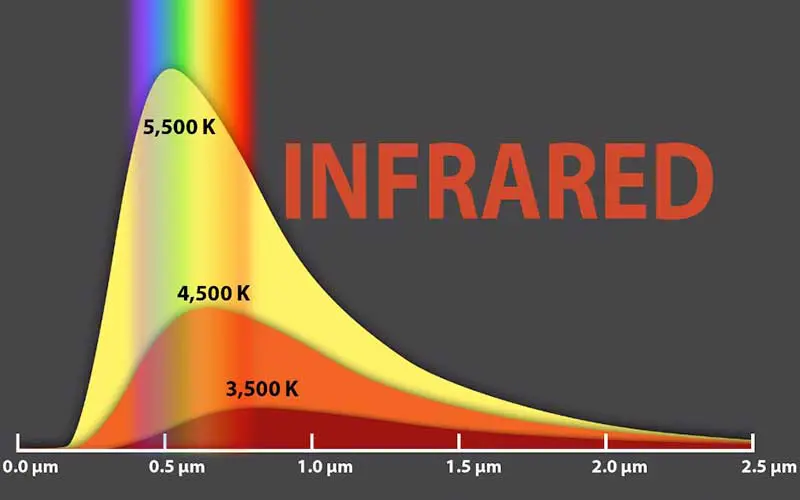
Infrared radiation or infrared light is a radiant energy that is invisible to the human eyes, but can be felt as heat. It is a type of electromagnetic radiation spectrum with frequencies being produced when atoms absorb and release energy. The two most obvious sources of infrared light are the sun and fire.
Every object in the universe can emit IR radiation at some level and the most well-known sources are fire and the sun.
IR is a kind of electromagnetic radiation wherein frequencies in a continuum get produced as atoms that release and absorb energy.
It can go from the lowest to the highest frequency.
Included in electromagnetic radiation are radio waves, microwaves, infrared radiation, gamma rays, X-rays, visible light, and ultraviolet radiation.
When these kinds of radiation go together, they create the electromagnetic spectrum.
According to NASA, William Herschel, a well-known British astronomer, discovered infrared light in the year 1800.
He had an experiment that could measure how the colors in the visible spectrum have different temperatures.
He had thermometers placed in the light path of every color in the visible spectrum and was able to observe the temperature increase when it went from blue to red.
William also discovered that the measurement of warmer temperature was beyond the visible spectrum’s red end.
Infrared waves happen at frequencies above the microwaves in the electromagnetic spectrum.
They are just below the visible red light, which is why they are called “infrared.”
As per Caltech or the California Institute of Technology, compared to visible light, infrared radiation has longer waves.
The IR frequencies can range from around 300 GHz to approximately 400 THz, with wavelengths estimated to have a range from 1,000 micrometers to 760 nanometers.
However, according to NASA, these values may not be definitive.
Just like the visible spectrum of light that ranges from the longest wavelength of red to the shortest visible light wavelength of violet, infrared radiation comes with a range of wavelengths of its own.
According to NASA, the “far-infrared” waves are longer and closer to the electromagnetic spectrum’s microwave section.
You can feel this as intense heat that is the same as the heat from fire or sunlight.
“Near-infrared” waves that are shorter can be closer to the electromagnetic spectrum’s visible light.
Aside from that, it does not emit detectable heat like what the television’s remote control discharges whenever it changes the channels.
One of the ways you can have heat transferred between two places is IR radiation.
Conduction and convection are the other two.
Everything that has a temperature of more than -268°C or -450°F can emit IR radiation.
As per the University of Tennessee, half of the sun’s total energy is emitted as IR and most of the visible light of a star can get re-emitted and absorbed as IR.
Credit : IRDA
Picture Credit : Google




